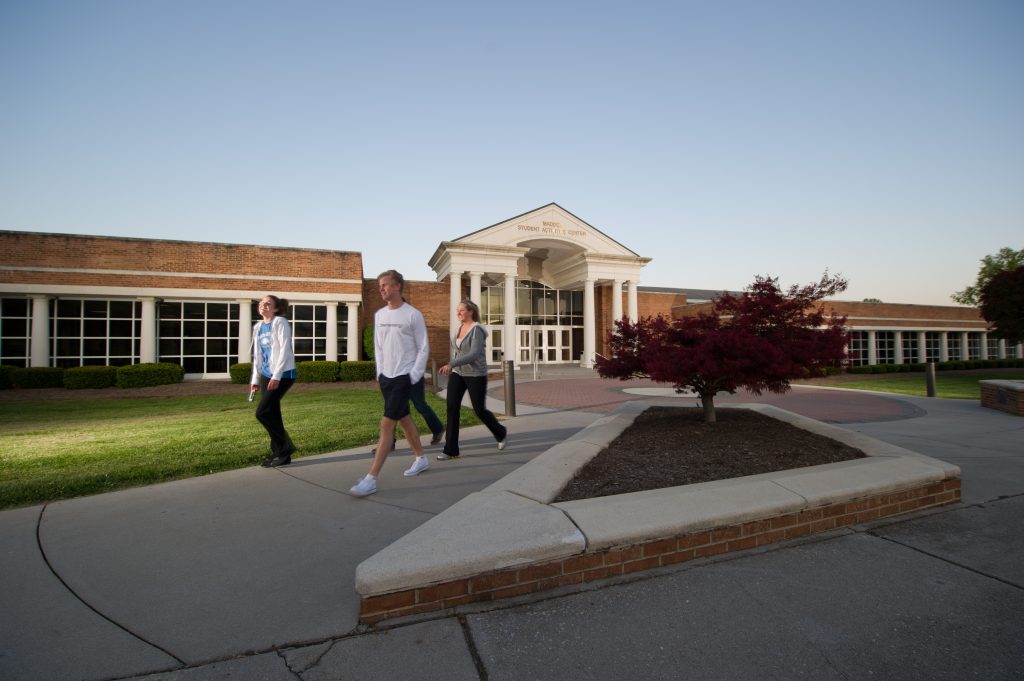Nikon D4, 28-300mm, ISO 100, 1/250, f/4.5, Off-Camera Fill Flash with Alien Bees 1600 and fired with Pocket Wizard Plus System.
Walk and Talk
This past week, I was privileged to photograph a college campus. I combined two things that gave me some of my best photos: off-camera flash and people moving. These combined techniques resulted in great expressions and good color.
The first thing I started with on the assignment was a group photo, but the best results regarding expressions were not when they were standing still but when they all walked toward me. Now mind you I almost lost my photo assistant a few times. He had to walk backward and keep the same distance from the group constant. This was to ensure I had good exposure.

Since I had a good group and we finished early with the group photo, I divided them into small groups and had each do what I call walk-and-talk. We assigned one person to talk and the others to listen with their ears and eyes. So, one person talks, the others listen, and they walk towards me.
Thankfully, the assistant didn’t fall this week while walking backward, carrying lights, and watching the subjects to ensure the lights were on.

Buildings
I love shooting buildings at dusk. The photo of the building and the students walking is taken at 7:55 p.m., and sunset is at 7:58 p.m. I love this digital camera. You can see all the information, like when I shot the photos. While the sky looked better about 20 minutes after sunset, we had to let the students go to another commitment.
We had them walk through the scene a few times. My two Alien Bees 1600 are lighting the building on full power, powered by Paul Bluff’s Vagabond batteries.

| Nikon D3S, 14-24mm, ISO 200, 1/1.6, f/11, Off-Camera Fill Flash with 2 – Alien Bees 1600, fired with Pocket Wizard Plus System. The flash sync was set to Rear Sync to get the car lights behind the car and not in front of it. |
I took the photo above at 8:24 p.m., and as you can see, the sky is much darker blue but not black. I used the Alien Bees to light up the building since this campus didn’t have lights on their buildings at night.
Fill flash in the woods.

One of the ugliest lighting is under trees. You get a green cast due to the light going through the leaves. I used the off-camera flash with the Alien Bees 1600 to kick in light from the front and mainly offset the green light. I also benefited from having light in their face rather than raccoon eyes. Raccoon eyes are caused by top lighting, which you see during the day and give you dark circles around the eyes.
Fill flash in direct sunlight.

Why use a flash in direct sunlight? You need to avoid raccoon eyes, and also, if you want, you can help drive the audience to the subject by using the light as I have done here.
Fill flash inside

When I am inside, and people are working like this lady on her computer, you are just as prone to get raccoon eyes as outside. Why? The reason is that the fluorescent lights above her act like the noon sun. I have the photo assistant hold the flash and direct it to her face. The Nikon SB900 is zoomed to 200mm and, therefore, is light using a grid on studio strobes. It is directing the light to just her face.
I used the lighter green gel with the Nikon SB900 system to balance the flash with the room lights. To get the correct lighting, I took a custom light reading using the ExpoDisc and had the assistant point the flash at the lens when I did this. I tried both green gels that came with the camera, and the lighter gel gave the best balance of color with the rest of the room.
I set the sync speed to Slow-Sync. I shot the photos in Aperture Priority on Auto ISO with the maximum shutter speed set to 1/100 so I would avoid the color shift that happens with fluorescent lights.

